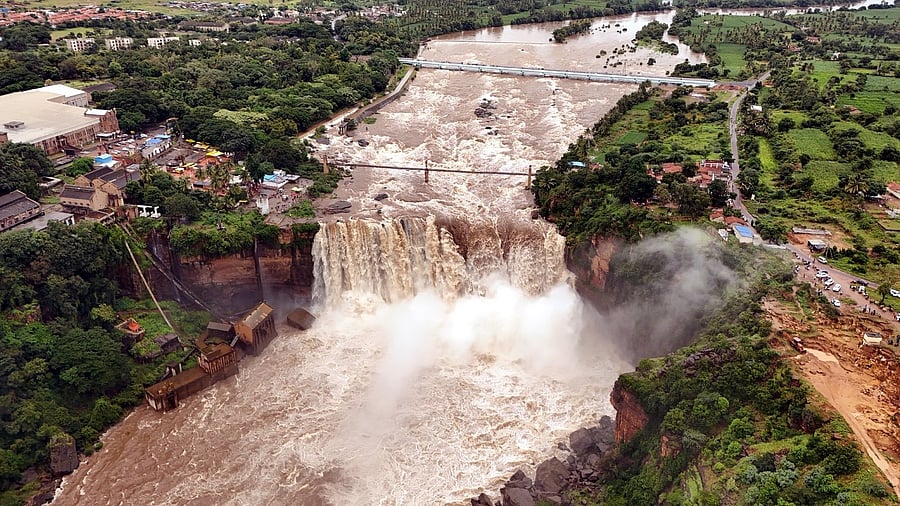
Credit: DH Photo
Hubballi: Seven of the ten major reservoirs in Cauvery and Krishna basin are discharging higher quantities of water than its inflow. The reservoir managing authorities say that the high discharge of water is to maintain storage at the reservoir and ensure no flooding in the downward stream area.
Of the total 537.02 tmc ft of storage capacity, these reservoirs as on August 20 have stored 477.82 tmc ft of water. The state discharged nearly 4.04 lakh cusec of water on Wednesday from its reservoir to other riparian states like Andhra Pradesh, Kerala and Tamil Nadu.
Hydro-mechanical engineer Kannaiah Naidu says dam management officials, based on previous records and expected inflow due to rainfall in catchment areas, calculate the discharge. Higher discharge helps the officials in two main purposes, to store fresh water and ensure non-flooding in the down-stream areas.
On Wednesday alone the six Krishna basin reservoirs—Bhadra, Tungabhadra, Ghataprabha, Malaprabha, Almatti and Narayanapura—received 20.5 tmc ft of water following copious rains in the catchment areas, especially in Maharashtra. Almatti and its balancing Narayanapura reservoirs are discharging nearly 2.5 lakh cusecs and 2.05 lakh cusecs of water to the river course, while their inflow is around 1.14 lakh cusecs and 1.83 lakh cusecs respectively.
“The catchment areas of Krishna Basin Rivers, especially in the Western Ghats, are receiving very heavy rainfall. We need at least 48 hours of leg-up time to store the flood-water that is expected to arrive at the reservoirs by August 21 morning. To ensure we have sufficient storage space for inflow and to prevent flooding in river down-stream we have made the calculations and over-last two days discharging nearly two-lakh cusecs of water. We may increase the discharge further based on inflow record,” says Almatti Reservoir Chief Engineer D Basavaraj.
Except for Tungabhadra reservoir all the other reservoirs are nearing their full storage capacity. The reservoir near Hosapete has been advised to store only 80% of its total (105 tmc ft of water) capacity due to poor condition of crest gates. The officials are maintaining an inflow and outflow of 1.28 lakh cuses of water from the reservoir.
In the Cauvery basin too, all the four reservoirs—Harangi, Hemavathi, KRS and Kabini—are discharging higher or equal to their inflow. They received nearly 5.7 tmc ft of water on Wednesday.
“We are discharging anywhere near 80,000 to one lakh cusecs of water to ensure that KRS has nearly 40 tmc ft of water that the region needs for its near future use,” says KRS Superintending Engineer Raghuramani K.
Steady inflow
Compared to last year, the inflow and outflow at the reservoirs in two river basins is lesser. Till August 20, 2024 the major reservoirs had a cumulative inflow of 1,279 tmc ft of water, whereas discharge was 889 tmc ft of water. This year through the inflow to the 10 reservoirs is 1,115.8 tmc ft of water and discharge is 839.7 tmc ft. One of the reasons for higher storage of water last year was the drought-like situation in 2023.